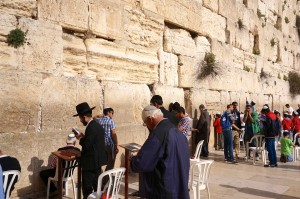- Getting ready to hit the road!
- Some thoughts on Hong Kong…
- A day in Danang and Hue, Vietnam
- Saigon River and Saigon, Vietnam
- Siem Reap and Temples, Cambodia
- The Floating Village — Kompong Phluk, Cambodia
- Phnom Penh and the road to Sihanoukville, Cambodia
- Bangkok, Thailand
- Day 2 in Bangkok — Ayutthaya, Thailand
- Singapore
- Langkawi Island, Malaysia
- Phuket, Thailand — or sort of…
- New Delhi, India
- Agra and the Taj Mahal
- The road to — and Jaipur, India
- India — a few closing thoughts.
- Dubai, United Arab Emirates
- Oman (The Sultanate of)
- Luxor, Karnak, and the Valley of the Kings, Egypt
- Petra, Jordan
- Sharm el Sheik and St. Catherine’s Monastery, Egypt
- Cairo and Giza, Egypt
- Egypt — Some final thoughts…
- Zooming around Israel
- Bodrum, Kusadasi, and Ephesus, Turkey
- Corfu, Greece
- Dubrovnik and Zadar, Croatia
- Venice, Italy — the last hurrah!
After leaving Egypt, we were ready for a change – something a bit more modern, clean, and hopeful. Israel clearly fit that bill. We visited two ports in Israel (Ashdod for Jerusalem and Haifa). I wasn’t quite sure what to expect when we arrived in Israel and, after having visited, I still find myself scratching my head a bit. Having said that, we really enjoyed our time there.
It seems that a lot of the regional dynamics in the Middle East find Israel somewhere in the thick of it. Consequently, I expected to see lots of soldiers, missile batteries, etc. and to experience people with a hard edge. But that’s not what we saw. What we saw was a land that has been reclaimed over the years, with verdant agricultural areas where there had been salted swamps and lots of pine forests where there had been barren land. The Israelis clearly love their land and getting as much out of it as possible in a collaborative way (e.g., the kibbutz movement). We also found people who were very friendly, hopeful, often with a wry (and somewhat fatalistic) sense of humor. The other thing that becomes more clear when you visit Israel is what a “dog’s breakfast” the political land boundaries become. Take out a map – I’ll wait for you…. Okay, got it? Take a look at Israel. Start by looking at all their neighbors – Lebanon, Syria, Jordan, Egypt. And that’s just the agreed upon land borders – then there’s the disputed areas in the West Bank and Gaza Strip related to the Palestinians and the Golan Heights with Syria. Through the 1967 and 1973 wars (and subsequent peace treaties), Israel’s land holdings have grown and shrunk. As a result, the State of Israel (especially as the Israelis think about it) is a patchwork quilt with some very narrow areas. Consequently, self-protection is high on their agenda; both in buffers against their external neighbors who they fight with on-and-off and within their own territory with Israeli Arabs versus Arabs who live in Israel, but aren’t Israelis. It’s complicated and I don’t profess to understand it, but it colors the Israeli’s policies and people’s thinking. Yet somehow, on a day-to-day basis, things seem quite normal and prosperous.
Obviously, another element that puts Israel in the center of conflict is the Holy Land – as seen by the Jews, the Muslims, and a number of flavors of Christianity. Many of the religious sites are seen as holy and important by all the above named religions and control/access become a big deal (BTW, one of the things that became apparent to us in visiting these places was just how much similarity and overlap there is between the religions and yet they are in constant conflict). Needless to say, we visited many of the religious sites in Jerusalem, Nazareth, and the areas around the Sea of Galilee, Jordan River, etc. We were stunned at how many pilgrims from all over the world and all manners of faith were visiting (even a Hopi Indian tribe from Arizona – in full costume!). But the other thing is how sliced and diced the holy sites are – especially between the various Christian religions (the big break seems to be between the Catholics and the Orthodox Church (which also splinters between Russian, Greek, and others). As a consequence, they either have duplicate shrines in holy places where there is sufficient room (e.g., Nazareth, Sea of Galilee) or have divided the Stations of the Cross within Jerusalem – whether physically, or by day of the week, or time of day. You will excuse me for saying this, but it is a real mess and not anything that God would be too charmed with. They really need to work through this. It negatively impacts getting people through the monuments and slices and dices what people can see and not see. With tongue firmly in cheek, I arrived at a potential solution – let Disney run the whole thing. No, I’m not being blasphemous. I’m not talking about turning the Holy Land into a theme park. But one thing Disney is good at is moving big crowds through complex mazes and keeping everyone happy and organized! Anyway, I will stand by for the flaming I will surely take for saying that, but something really must be done.
Anyway, with that said, we saw a lot in a few days. In Jerusalem alone, we saw the Church of the Holy Sepulchre (that includes Golgotha where Jesus was crucified and the site where he was buried), the Cenacle (or “Upper Room”) that is supposed to be the site of the Last Supper, the Church of All Nations (that includes the rock and olive tree grove where Jesus prayed before his arrest), the Tomb of King David, and the Western (Wailing) Wall. Most of these are in pretty close proximity and, when I observed this to the tour guide, she told me that these were the locations “according to tradition” (in other words, they’re not sure). At first, that bugged me, but then I started thinking of Plymouth Rock, that is much of a symbolic memorial to the Pilgrims than a place the Mayflower bumped into. We then went to Nazareth, where we saw the Church of the Annunciation (including the childhood home of Mary) and St. Joseph’s Church (where Joseph’s workshop was located). We also drove down to the Sea of Galilee (actually the lake of Galilee – it’s fresh water) to visit the Capernaum (an ancient fishing village that was the home of St. Peter and where Jesus served part of his ministry), the Church of the Mount of Beatitudes (where Jesus gave the Sermon on the Mount) and the Church of St. Peter’s Primacy (where Jesus appeared to his disciples after his resurrection and made Peter the head of the Church). Finally, and somewhat unfortunately, we visited the Yardenit Baptismal Site on the Jordan River. The site where Jesus was baptized by John the Baptist hasn’t been a very safe place for a while (surrounded by mine fields), so they moved the baptismal site up north a bit. Today it is somewhat of a theme park, complete with souvenir shop, changing rooms/showers, rental gowns for the baptizees, and several baptismal pools where you can have a video taken of your baptism. There is also a place where you can feed the catfish and nutrias that are in the same water that you are dunking your head into. You will excuse me, but it was pretty commercial. I do have a marketing idea for it that could be a real moneymaker. If you want details, let me know!
By the way, when touring the area and learning both about the local history and the evolution of language, we learned some interesting things. A couple of examples stuck with me (of course, all of these are subject to your own religious beliefs!). The first relates the word and concept of Hell. It turns out that there is a valley just south of the old city of Jerusalem called Gehenna (or Gehinnam). This was a place where some apostate Israelites and the followers of Ba’als and Caananite gods made sacrifices of their children by fire. From that point, the area was consider cursed and a place for the wicked. The Anglo-Saxon translation of Gehenna is Hell. Hmmm… interesting. The second refers to Armegeddon. This is from the Greek translation

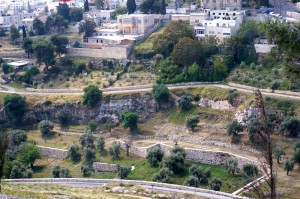
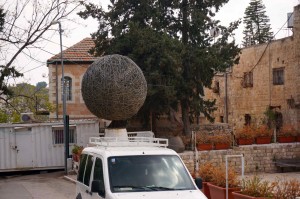
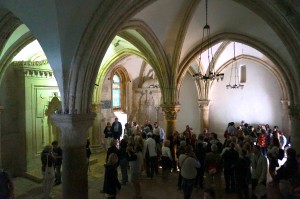

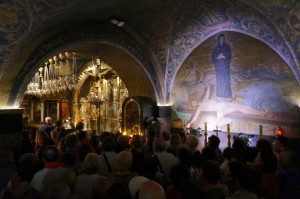
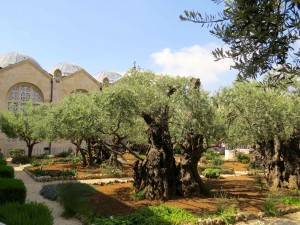
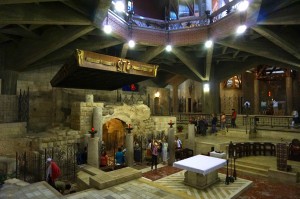
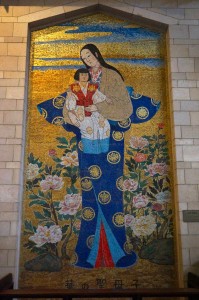
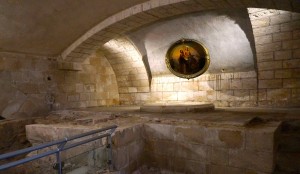
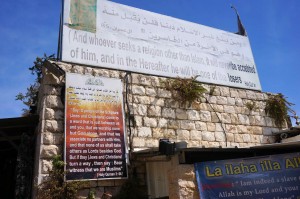
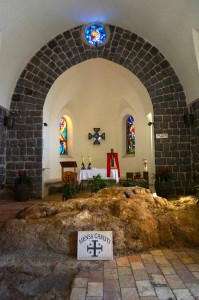
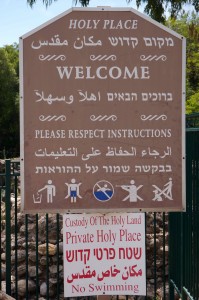
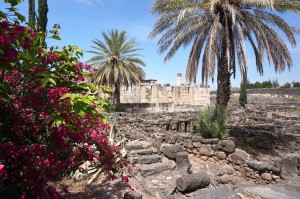
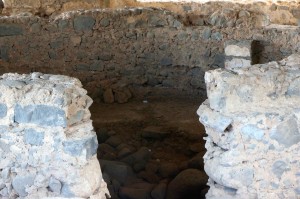
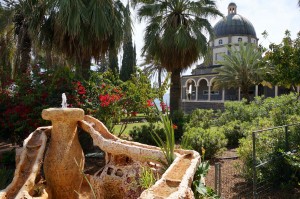
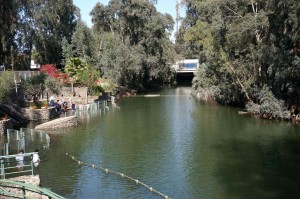
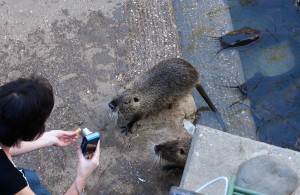
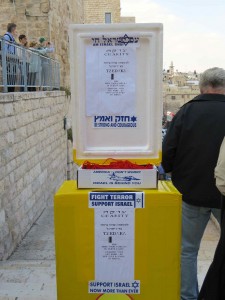
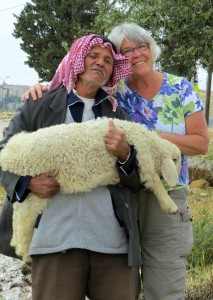
of a Hebrew word “har megiddo” (Mountain of Magiddo), referring to the ancient town of Megiddo (about 25 miles from the Sea of Galilee). It turns out that Megiddo was at a key crossroads related to ancient trade routes in the area. Megiddo sits on a hill, but not a natural one. The hill is actually the result of generations of people rebuilding on top of previous forts that had been destroyed during battles that took place there – including a key WW I battle that drew forces from different parts of the world to fight in a legendary battle to end all battles.
Anyway, the trip to Israel was full of surprises and was very educational. It was definitely an uplift after the time we had in Cairo. Now, on to Turkey!
This entry was posted in Cruising, Israel, Travel